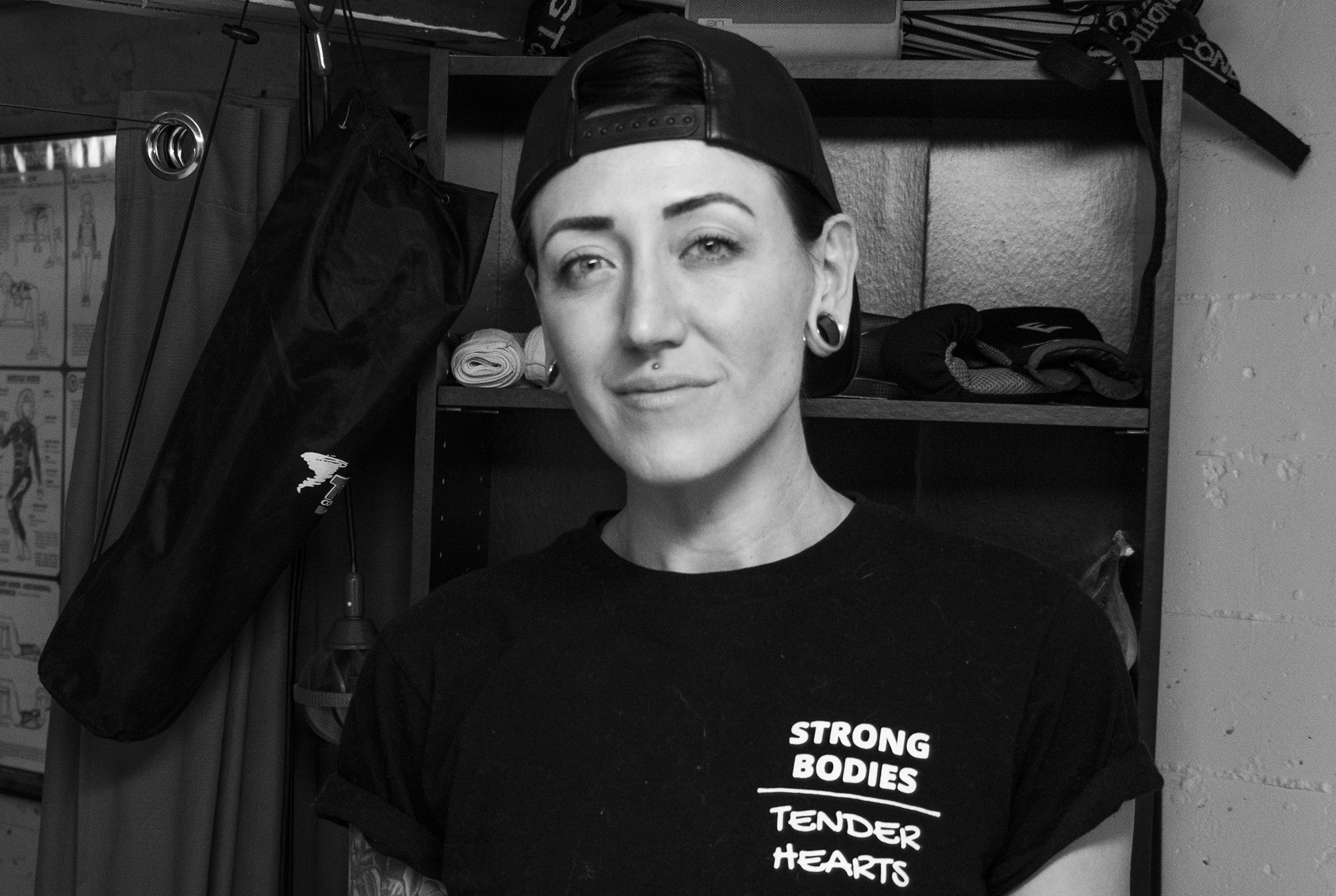For many queer people, it can be difficult to work on their personal fitness. There are often gendered restrooms, intake forms that don’t create space for one’s identity, and gendered language on gym equipment. Not to mention the potential for harassment and the equally intrusive prospect of gym staff who don’t know how to handle it.
Working with a queer personal trainer, however, allows the possibility of working with a person who understands all of this and knows the personal strains such a space can elicit. In fact, in their practices many have worked toward actively combating hyper-gendered fitness narratives to create radically inclusive spaces where everyone can feel welcome.
We spoke to several queer trainers across North America who not only seek to empower queer, trans, gender non-conforming, and non-binary people in their practices, but who offered suggestions for making gyms fear and judgement-free zones, shared how personal training has affected their own fitness experiences, and gave insights into the experience of being queer in the often heteronormative fitness industry.
Interviews have been edited for length and clarity.

Kyle Fairall, Founder and Executive Director, QUEERFLEX Canada
Edmonton, Alberta, Canada
They/Them/Theirs
VICE: What made you decide to become a personal trainer, and then to open your own gym?
Kyle Fairall: QUEERFLEX started in late 2016 kind of as a response to my own needs as a non-binary person not being met in the gym. I came out as non-binary in 2013 and in that whole process I really leaned hard on fitness and movement to start to understand what that meant in my body and reconnecting with my body. Going to gyms and typical fitness spaces or studios, I wasn’t having really great experiences with those spaces being affirming and sometimes even accepting of my identity. [I] was like, I’m not getting what I need from these spaces so I’m just going to fulfill that dream and open my own gym.
How were your needs not being met?
The fitness industry and wellness spaces are quite gendered, from questions on the intake forms not being reflective of my gender identity to talking with trainers about specific things I wanted to work on within my body. I’ve had several personal trainers and very poor experiences with all of them when it came to getting why my name legally on the contract is one thing but the name that I’m asking them to call me is different and them not understanding or even wanting to really understand what that was about; to having to explain pronouns and constantly having to correct them; to being misgendered by staff in the gym; to going in and not having bathrooms or change rooms that fit with my identity; all the way to actually being harassed on the gym floor. There was one individual who I asked if I could work in on a piece of machinery and this guy lost his mind on me and called me an “it.” I [went] to the staff at the gym to help me and they didn’t know what to do.
How did you work to make QUEERFLEX into the inclusive space you felt was missing?
We actually developed an entire training program around this for other trainers and gyms that are looking to be more inclusive and affirming and create safer spaces for their queer, trans, and non-binary staff and clients. We looked at everything a person could experience accessing a gym space, from walking in the front door to how they’re greeted. We don’t use gendered greetings here because we don’t want to assume what somebody’s gender or experience of those things might be. Our safer space guidelines, which we call our house rules, talk a lot about [how] you have autonomy over your own body. We encourage people not to make assumptions on other people’s identities. We also come from a “health at every size” perspective, which I think is really important because at QUEERFLEX we really honor the fact that LGBTQ+ accessibility doesn’t just end at gender identity and sexual orientation, it also encompasses many other intersecting parts of our identities that impact the way that we experience our bodies. We don’t tolerate any forms of harassment or discrimination based on gender, ability, race, socioeconomic status, and we honor the fact that we don’t know what somebody’s experiences with trauma might be. We build those into our actual safer space guidelines and the policies we use when working with people. We have a space on our forms for people to put whatever name that they go by, we ask folks for pronouns. Our emergency contact information that we ask people for—we are really intentional about asking to make sure that whoever you’ve got listed, it’s okay that we use the name that you go by with your pronoun so we don’t unintentionally out somebody. We ask about things like gender affirming practices, we give folks information on how to train if they’re wearing a binder, and more. We have all of our trainers trained on supporting folks who use different gender affirming practices as well as physiological considerations to make for people who might be on hormones. We also have the gender inclusive change room. All of our washrooms are gender inclusive and accessible andour entire space is supportive of that level of accessibility.
Follow Elyssa Goodman on Twitter.
Sign up for our newsletter to get the best of VICE delivered to your inbox daily.
from VICE https://ift.tt/2TYsSd3
via cheap web hosting
No comments:
Post a Comment